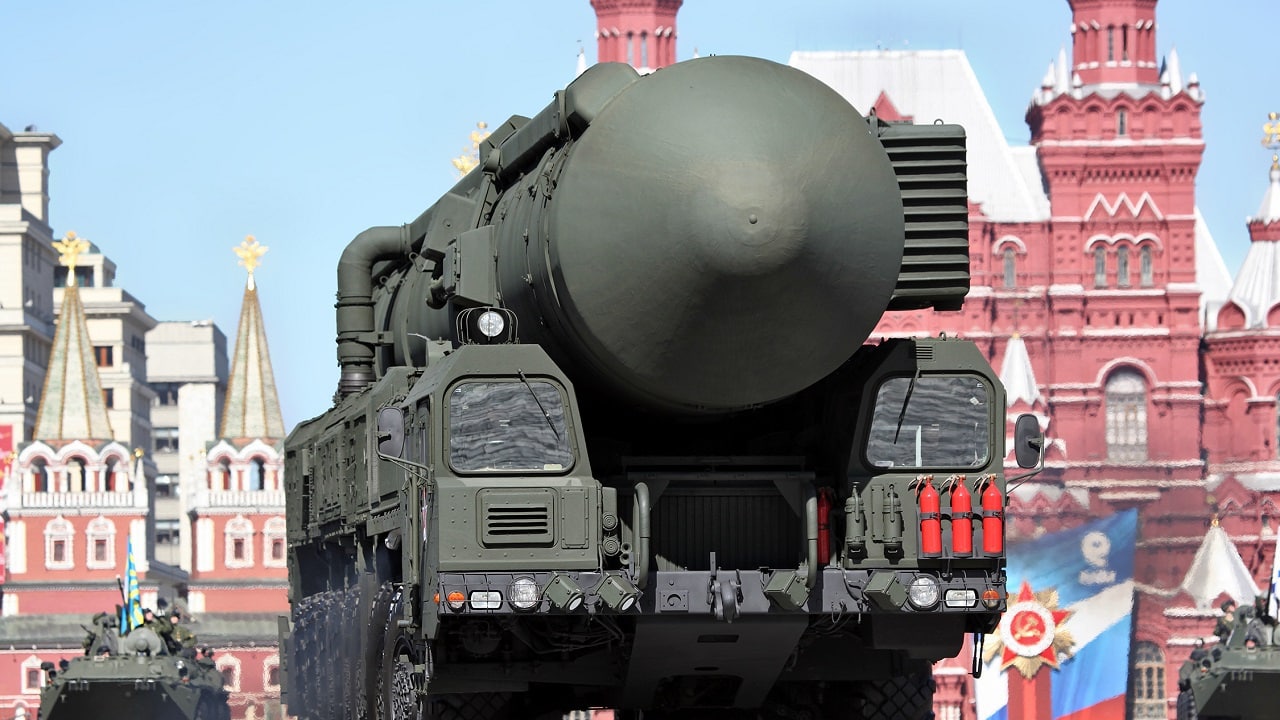Russia is certainly consistent. It violated the INF Treaty. It violated the Open Skies Treaty. And now, the State Department reports, it is in non-compliance with the New START agreement—the very last arms control treaty in place.
(Subscribe to 19FortyFive‘s New YouTube Channel here.)
When U.S. President Joe Biden took office, he agreed to extend New START through 2026 despite its flaws. While New START limits the total number of warheads the U.S. and Russia can deploy on their strategic launchers, it does not limit Russia’s growing stockpile of tactical nuclear weapons, nor its new and novel capabilities such as nuclear-armed hypersonic weapons and the Poseidon underwater drone.
Even with these advantages, Moscow once again has shown its total disregard for international security commitments. By failing to convene a Bilateral Consultative Commission — a forum to discuss issues related to treaty implementation — and refusing to allow required inspections of its nuclear forces, it leaves the State Department with no confidence that Moscow has remained within the New START limit of no more than 1,550 deployed nuclear warheads throughout 2022.
This is an unacceptable state of affairs, one that puts U.S. national security at risk. If Russia can pick and choose which aspects of a treaty it can follow, it defeats the purpose of having a rules-based agreement.
It gets worse. While the State Department assessed that Russia did not go significantly over the treaty warhead limits, Russia’s non-compliance could be the first step toward a serious material violation.
Russian non-compliance highlights the need for the U.S. to double down on its efforts to recapitalize its nuclear forces. The U.S. currently plans to deploy modern nuclear capabilities, like the Sentinel missile and Long Range Standoff weapon, around the end of the decade.
But if Russia continues to ignore its obligations under New START, the U.S. will need to be prepared to compete in an environment without arms control.
In particular, the Biden administration should work with Congress to identify ways to accelerate nuclear modernization timelines. This can include increasing funding for nuclear programs, including the nuclear-armed sea-launched cruise missile.
Last year, Congress appropriated just $45 million to continue research and development for the missile and its accompanying warhead. This year, Congress should provide at least $400 million to move this program into development and field it by the end of the decade.
Moreover, last year Congress required the Pentagon to consider assigning these nuclear programs a DX acquisition rating—designating them as highest-priority. Congress could take this further, mandating the DX rating and taking additional steps to separate nuclear modernization programs from the traditional cumbersome acquisition bureaucracy.
The White House should also work with Congress to identify ways to improve the flexibility and resilience of the U.S. nuclear enterprise in order to better hedge against a nuclear threat environment that — as demonstrated by Russia’s willingness to flout arms control — can rapidly change.
It’s possible that Russia is refusing to comply with New START to punish the U.S. for its support of Ukraine. Or perhaps Moscow hopes to gain concessions in exchange for returning to compliance.
Or, it may be trying to gain an advantage over the United States in future negotiations for a follow-on agreement to New START.
Indeed, Russia has expressed its interest in both preserving New START and negotiating a follow-on agreement. But the U.S. should not budge an inch.
Instead, the administration should communicate that Russia’s continued unfaithfulness only makes it an increasingly unattractive partner for any arms control pact.
Arms control can certainly provide an important tool for maintaining nuclear stability, and the U.S. should reserve this option for times when it can contribute to national security. But arms control is not an end in itself, and maintaining strong nuclear deterrence should remain the United States’ number one goal.
Russia should understand that, as well.
MORE: Ukraine Needs M1 Abrams Tanks Now (But Will Have to Wait)
MORE: Joe Biden Won’t Send F-16 Fighters to Ukraine
MORE: Why Putin Should Fear the F-16 Fighter
MORE: Why Donald Trump Can’t Win in 2024
Patty-Jane Geller is the senior policy analyst for nuclear deterrence and missile defense at The Heritage Foundation’s Center for National Defense.

